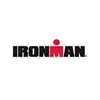
Whatever distance you race, your day can get frustrating when you feel the fade coming on in the latter part of the race. Most triathletes are quite skilled at swimming, cycling and running. However, "running off the bike," as it is referred to in the sport of triathlon, differs from open running races in numerous ways. I raced my first IRONMAN race with over 20 open marathon races under my belt. I knew how to run a marathon fast.
Unfortunately, running off the bike is a completely different game, and it took several races to successfully run off the bike quickly. Here are a few key points from myself, and some top coaches, on running faster off the bike when racing.
1. Bike Pacing
Executing a well-paced bike split, especially in an IRONMAN race, takes patience. Jesse Kropelnicki, founder of QT2 systems analyzes his athletes' data meticulously to help train their sense of even pacing. Kropelnicki wants to see a bike split where there are not excessive spikes or drops in watts during the course of the race.
More: 7 Steps to Find Your Tri-Specific Bike
To analyze your own race, look at your average watts to make sure that a significant portion of your racing watts were not falling above or below your average watts. In other words, spikes in power can kill fast run splits.
Kropelnicki analyzes cadence in a similar format, seeking to help athletes avoid spikes or drops in the average cadence over the course of the race. He also looks for an even split race, where the first half of the bike is evenly paced to match the second half.
2. Nutrition
It's no surprise that lack of calories on the bike can lead to sub-par run performances. An area that many athletes fail to recognize is how much dehydration can affect the run. To put it bluntly, Kropelnicki advises peeing on the bike at least once in an IRONMAN 70.3 and twice in a full IRONMAN.
Staying on top of calories and spacing them out evenly (i.e.: don't go a long time between calorie intake—every 20 minutes is a good rule of thumb) is another important piece of running well off the bike. Additionally, ensuring that the calories you consume digest well while racing hard can make the difference between a great run split and a run that turns into the dreaded "IRONMAN shuffle."
How to Maximize a Flat Bike Course
3. Brick Workouts
Teresa Nelson, Founder of TN Multisport says that both practice and patience are keys to running well off the bike: "Practice in training, even if running just one mile off the bike, will help. Patience in racing—in particular pacing the run to maintain or build speed through the race—will land you your fastest run split."
Kropelnicki's top athletes do the majority of their training runs directly off the bike. His pro athletes, who include Linsey Corbin, Caitlin Snow and Pedro Gomez, typically run off the bike six days a week. Amateur athletes may only run off the bike four days a week, still a significant amount compared to most training plans. At its simplest, brick workouts are about practicing in training what will take place in racing, which helps get the body prepared for race day.
4. Run Pacing
Whether you are training for your best IRONMAN 70.3 or a personal best in an IRONMAN race, pacing the run is key. Going out of transition too hard will result in a slower run over the second half. This often has a domino effect, as it can be discouraging rather than staying strong and being motivated by passing other athletes late in the race.
Kropelnicki aims to have his athletes run the IRONMAN marathon at a specific heart rate determined in training. He then wants the athlete to hold this heart rate for each mile, or raise it. The goal is to never let the heart rate drop during the course of the run. For athletes who don't race with heart rate, using a GPS watch for pacing can help ensure that a blisteringly unsustainable pace is not set too early on in the race.
More: 7 Tri Bikes on a Budget
 Sign up for an IRONMAN.
Sign up for an IRONMAN.
About the Author










Discuss This Article